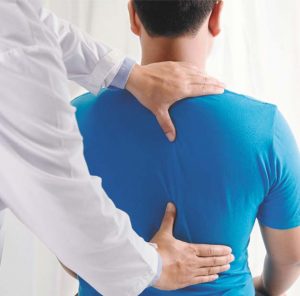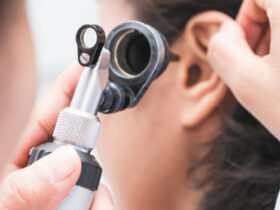By Michael Beecher, PT, DPT, OCS, SCS
 As a society, we are accustomed to regular “check-ups” for various things. We take our beloved pets to the vet regularly, service our cars every six months, and check in with our hair stylist, nail salon, or facialist on a consistent basis. Medically, we are accustomed to regular visits with our primary care physician, dentist, dermatologist, gynecologist, and more. Yet for some reason, it is common practice to only seek orthopedic care when injured. The concept of regular wellness visits to prevent injuries has consistently escaped the musculoskeletal realm and the common practice of most individuals. This concept is somewhat baffling, as it is not only antithetical to our normal “check-up” mentality in other realms, but it also is in direct contrast with the available research on orthopedic injuries.
As a society, we are accustomed to regular “check-ups” for various things. We take our beloved pets to the vet regularly, service our cars every six months, and check in with our hair stylist, nail salon, or facialist on a consistent basis. Medically, we are accustomed to regular visits with our primary care physician, dentist, dermatologist, gynecologist, and more. Yet for some reason, it is common practice to only seek orthopedic care when injured. The concept of regular wellness visits to prevent injuries has consistently escaped the musculoskeletal realm and the common practice of most individuals. This concept is somewhat baffling, as it is not only antithetical to our normal “check-up” mentality in other realms, but it also is in direct contrast with the available research on orthopedic injuries.
A study published in the journal Injury found that 24% of all acute orthopedic injures presenting to a United Kingdom district hospital were preventable and 35% of those preventable injuries required surgery. The most common causes of injury were overuse, falls, and occupational issues, many of which were due to lifting-related tasks. According to the Centers for Disease Control, 50% of all sport related injuries in children and adolescents are preventable, with the majority of them being diagnosed as sprain and strains.
One needs to look no further than the volumes of available data on anterior cruciate ligament injuries in youth and adolescent sports. While ACL injuries can occur through a variety of mechanisms, low-energy, noncontact injuries are most common, accounting for approximately 70% of ACL tears. There are numerous risk factors for ACL injuries, but the biggest risk factor is a lack of neuromuscular control, which is a modifiable risk factor. This means many of these injuries are preventable, and this is supported by the literature on ACL injury prevention programs. In childhood and adolescents, muscle performance of the hip and core musculature often does not develop at a proportionate rate with skeletal growth. This leads to a faulty movement pattern and a lack of control of the lower extremity during athletic activities.
However, by working with a physical therapist or fitness professional on movement proficiency and lower extremity strength, these injuries can be mitigated. Mandelbaum et al. demonstrated an 88% reduction in injury recurrence rate with the Prevent Injury and Enhance Performance (PEP) program.
Kiani et al. demonstrated a 70% injury reduction rate in the HarmonKnee program. Most recently, the Fifa 11+ program demonstrated up to a 50% reduction in long term injury reduction.
Existing literature regarding adults on injury predictors tells a similar story. The biggest predictor of future injury is previous injury and asymmetry in range of motion or strength. These factors plague many adults who have been injured in their past without fully restoring mobility or strength. Compound this with the demands of work life where the majority of individuals are sitting and staying sedentary, it is no wonder why so many injuries occur. We often prioritize those 1–2 hours of precious free time doing the things we love to do such as tennis or golf, instead of doing the things we need to do such as restoring mobility, strength, and balance.
Lastly, the consequences for preventable falls for older adults are dire. According to the CDC, more than one in four older adults report a fall each year. In 2020, 36,508 older adults aged 65 and older died from preventable falls, and over 2.8 million were treated in emergency departments. Over the past 10 years, the number of older adult fall deaths has increased 59%, while emergency department visits have increased 19%. Those who survive these falls have a significantly increased risk of mortality within one year, with the falls leading to a significant decrease in functional capacity and quality of life.
Without proper training over time, balance and overall strength declines significantly, leading to an increased likelihood of falls.
This data clearly highlights the need for regular musculoskeletal assessments throughout the lifespan. Physical therapists are movement experts, specifically trained for this this exact purpose. Through a comprehensive evaluation our team can assess range of motion, flexibility, muscle performance, and balance to determine any issues that increase injury risk and require attention. They will create a curated plan to address these minor issues before they lead to injuries, pain, and time away from doing the things you love. In addition to a comprehensive musculoskeletal evaluation, it is vital to consider other key aspects of optimal health that, if off-track, could increase the likelihood of injury. Assessing one’s health through the four pillars of optimal health — exercise, nutrition, recovery, and stress management — is crucial. Successful injury prevention and health optimization begins with an Optimal Health Assessment consisting of all elements listed above. This is forward thinking, proactive, orthopedic care. Gone are the days of waiting until injury to seek treatment, and clients have direct access to our team of expert physical therapists without the need for physician’s script.
Prevent future injuries by booking an Optimal Health Assessment today. Contact us at 239.342.1342 to schedule your assessment or learn more about Performance Optimal Health.
Michael Beecher, PT, DPT, OCS, SCS, is the head of clinical operations at Performance, as well as a physical therapist, Titleist Performance Institute medical professional, a Hospital for Special Surgery credentialed advanced hip clinician and a certified dry needling specialist.
Performance Optimal Helath
2260 Logan Boulevard N, Suite 302
Naples, FL 34119
239.342.1342
PerformanceOptimalHealth.com










